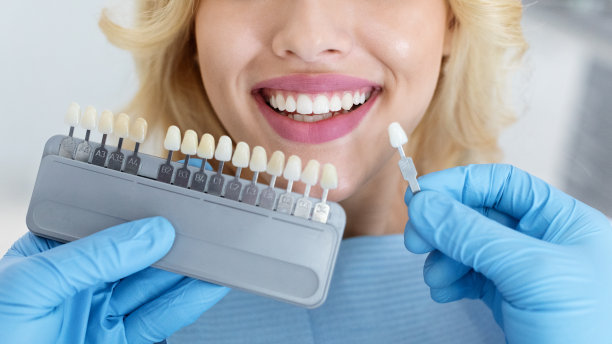The Most Effective Countries for Treating Dental Issues and Ensuring Optimal Oral Health Care Solutions
original:health91192025-04-16 11:54:15
Summary: This article explores the most effective countries for addressing dental issues and ensuring optimal oral health care solutions. It delves into various healthcare systems, the integration of
Summary: This article explores the most effective countries for addressing dental issues and ensuring optimal oral health care solutions. It delves into various healthcare systems, the integration of advanced technology in dental care, the availability of preventive measures, and the affordability of dental services. By examining these key aspects, readers will gain insight into how different countries excel in maintaining oral health and treating dental problems. Furthermore, this discussion highlights the importance of comprehensive dental care that encompasses not only treatment but also prevention and education.
1. Advanced Healthcare Systems for Dental Care

Countries with advanced healthcare systems, such as Sweden, Japan, and Canada, are renowned for their effective dental care services. These nations prioritize oral health as a crucial component of overall health, ensuring that dental services are accessible to the population. Their healthcare systems are typically characterized by substantial government support, which results in equitable access to quality dental care.
In Sweden, for instance, public dental care services are subsidized through taxation. This allows residents to receive necessary dental treatments at an affordable cost, which significantly reduces the financial burden on patients. Similarly, Japan’s innovative healthcare system efficiently integrates dental care with general health services, facilitating easier access for individuals seeking oral treatments.
Canada also stands out with its provincial healthcare plans, covering a range of dental services, especially for children and low-income families. This comprehensive approach ensures that all citizens have access to necessary dental treatments, contributing positively to the nation’s oral health outcomes.
2. Integration of Technology in Dental Treatments
Countries like the United States, Germany, and South Korea are at the forefront when it comes to the integration of technology in dental treatments. They utilize advanced imaging systems, laser technologies, and computer-assisted surgical systems, allowing for more precise diagnostics and treatment processes. This technological advancement not only enhances the quality of care but also minimizes discomfort and recovery time for patients.
In the United States, many dental clinics are equipped with state-of-the-art facilities that offer digital x-rays and CAD/CAM systems for designing crowns and other dental restorations on-site. This expedites treatment timelines and improves patient satisfaction. On the other hand, Germany is renowned for its meticulous approach toward dental engineering, producing high-quality dental materials and instruments that are utilized globally.
South Korea has also been making significant strides in dental technology, with dentists incorporating innovative tools like 3D printing and virtual reality in their practices. Such advancements are instrumental in improving patient outcomes and experiences, showing how technology can play a pivotal role in effective dental care.
3. Emphasis on Preventive Dental Care
Preventive dental care is an essential component of effective oral health management, and countries like Australia, Denmark, and Finland excel in this regard. These nations implement robust public health strategies that stress the importance of regular dental check-ups, oral hygiene education, and community outreach programs. Such efforts significantly contribute to lower rates of dental diseases.
Australia, for instance, conducts national campaigns to promote oral health education among children and adults. This focus on prevention not only reduces the incidence of dental issues but also fosters a culture of proactive oral health management among the populace. Similarly, Denmark employs a systematic approach to preventive care, where regular dental visits are encouraged as part of routine health care.
Finland is notable for its comprehensive school dental services, which provide regular check-ups and treatments for children. This early intervention is crucial in instilling good oral health habits from a young age, which has led to exceptional oral health statistics in the country.
4. Affordability and Accessibility of Dental Services
Affordability and accessibility are critical factors in determining the effectiveness of dental care, and countries like Brazil, Thailand, and Spain have made significant strides in this aspect. In Brazil, there are numerous public and private dental care programs that offer affordable services, particularly in urban areas. This makes dental care accessible to a broader segment of the population.
Thailand stands out as a popular dental tourism destination, where many international patients seek quality dental treatments at competitive prices. The country’s investment in dental infrastructure and service quality has made it an appealing option for those looking to combine travel with dental care.
Spain also performs well regarding affordable access to dental care, often providing various packages and plans that cater to different economic classes. Offering both public and private dental care ensures that all citizens have the opportunity to receive necessary treatments without financial strain.

Summary:
In conclusion, the countries highlighted throughout this article demonstrate that effective dental care is multifaceted, involving advanced healthcare systems, technological integration, preventive measures, and affordability. Together, these elements create an environment conducive to optimal oral health care solutions. By learning from these successful models, other nations can work towards improving their dental care systems.
This article is published by HEALTH9119 Medical Health Network https://www.health9199.com arrangement.